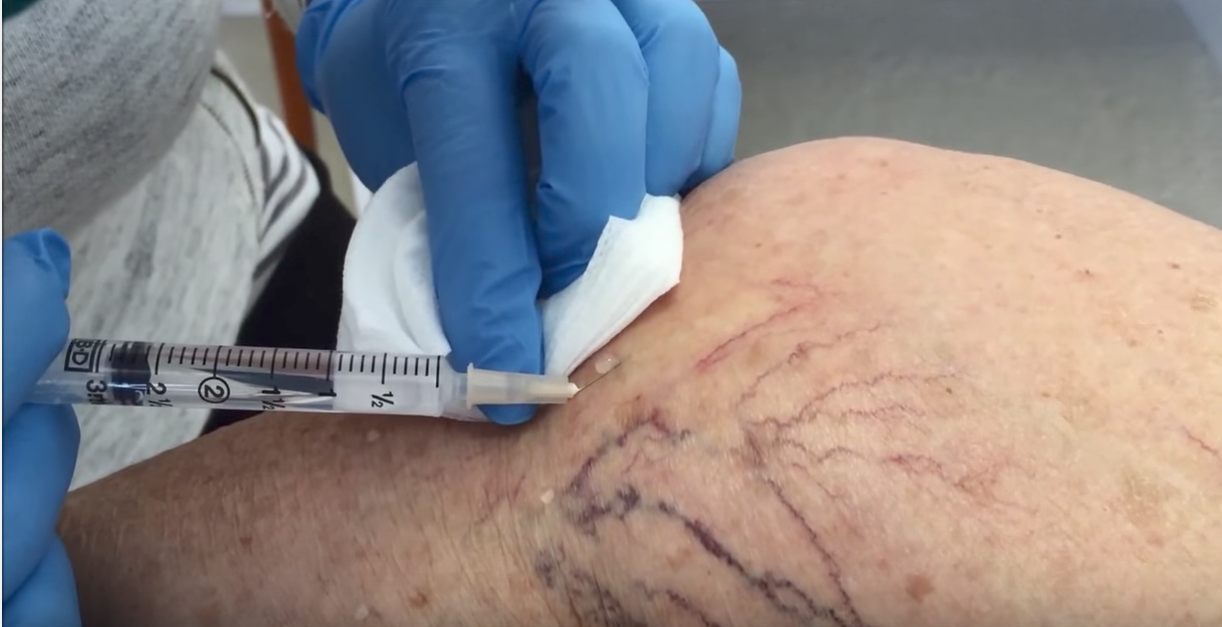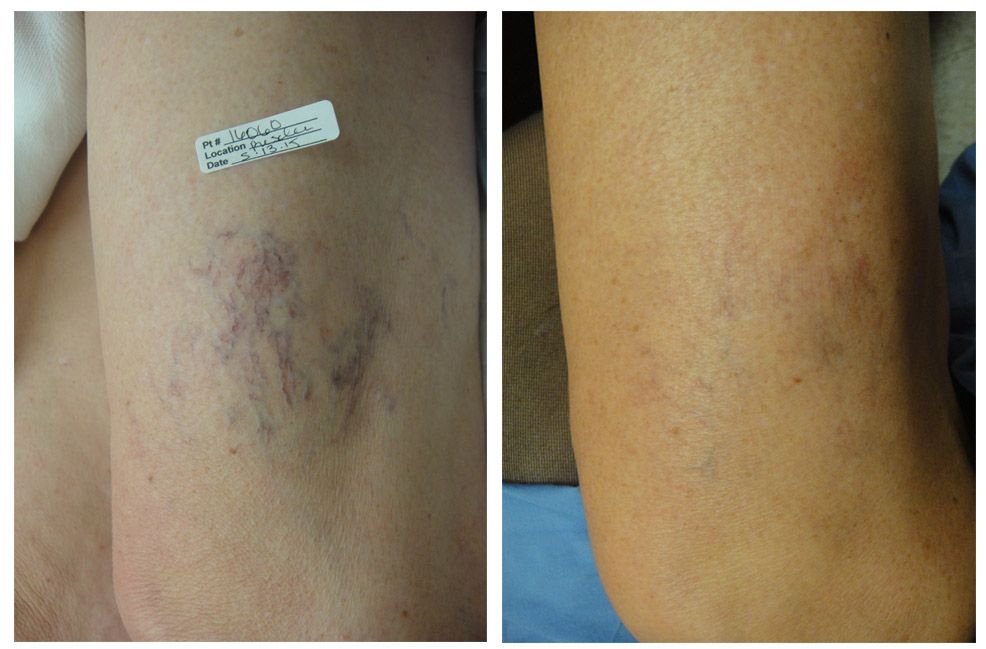SCLEROTHERAPY (SMALL LEG VEINS)
Eliminate Unwanted Veins and Achieve Smooth, Clear Skin
Sclerotherapy is a proven, minimally invasive treatment designed to eliminate small leg veins, including spider veins and varicose veins, by using a specialized solution that causes the veins to collapse and fade away. This treatment is ideal for individuals looking to improve the appearance of their legs by reducing unsightly veins and restoring smooth, clear skin.
How Sclerotherapy Works:
During a sclerotherapy treatment, a highly concentrated solution is injected directly into the targeted vein. The solution causes the vein walls to collapse, effectively sealing off the vein. Over time, the body naturally absorbs the treated vein, and it fades from view. This process does not harm surrounding tissues, and the skin's appearance is gradually restored to a more even, youthful look.
Sclerotherapy is most commonly used to treat spider veins and small varicose veins on the legs, but it can also be effective for treating veins on other areas of the body.
Benefits of Sclerotherapy for Small Leg Veins:
- Reduces the Appearance of Small Leg Veins: Sclerotherapy effectively treats spider veins and smaller varicose veins, improving the overall appearance of the legs.
- Non-Surgical & Minimal Downtime: As a non-invasive procedure, sclerotherapy requires no surgery, and patients can resume normal activities immediately after treatment.
- Safe & Effective: Sclerotherapy is an FDA-approved procedure with a long track record of safety and success, making it one of the most trusted treatments for leg veins.
- Quick Treatment: The procedure is quick, typically taking between 15-30 minutes depending on the number of veins being treated.
- Minimal Discomfort: Most patients experience minimal discomfort during the procedure, with only slight stinging or burning sensations at the injection sites.
Treatment Process:
- Consultation: During your consultation, a skilled provider will assess the veins to be treated and discuss your goals for the procedure. This ensures the best approach to achieve optimal results.
- Injection: A fine needle is used to inject the sclerotherapy solution directly into the targeted veins. The treatment is typically well-tolerated, and topical numbing may be applied to ensure comfort.
- Compression: After the injections, a compression garment or bandage will be applied to the treated area to help the veins collapse and promote healing.
- Follow-Up Care: Your provider will provide post-treatment instructions, which may include avoiding strenuous exercise for a few days and wearing compression stockings to improve the outcome.
Why Choose Sclerotherapy for Small Leg Veins?
- Safe & Non-Invasive: Sclerotherapy is a safe and effective way to treat unwanted small leg veins without the need for surgery or long recovery times.
- Quick & Convenient: The procedure is fast and can easily fit into your schedule, making it ideal for those looking for an efficient solution with minimal downtime.
- Long-Lasting Results: With a few treatments, you can enjoy long-lasting results and improved leg appearance.
Sclerotherapy is the go-to solution for safely and effectively reducing small leg veins. Schedule a consultation today to learn how sclerotherapy can help you achieve smooth, clear legs and restore confidence in your appearance!


IS THERE A TREATMENT FOR BROKEN BLOOD VESSELS (TELANGIECTASIA)?
We have lasers designed to treat broken blood vessels on the face and the body. Using the 1064 ND:YAG laser or the broadband light laser, we’re able to remove the unwanted vessels. This process generally takes up to 3 treatments, followed by maintenance treatments 3-12 months apart. The ND:YAG 1064 laser is safe to use on all skin types. After treatment, the area may be raised and take on an appearance similar to a cat scratch for up to 3 days. These lasers can also be used to treat cherry angiomas with very little discomfort.
For these laser treatments, we require that you avoid sun exposure for two weeks prior and two weeks after.


